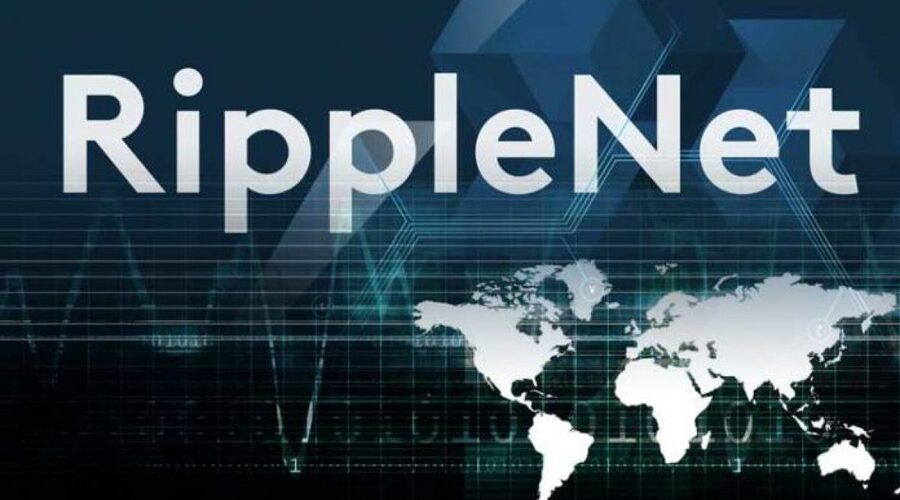
RippleNet: A beginner’s guide to the decentralised network of banks
RippleNet is a decentralised network of banks and financial institutions that use blockchain technology to facilitate fast and secure cross-border payments. In this beginner’s guide, we will explore RippleNet in detail and explain how it works.
What is RippleNet?
RippleNet is a blockchain-based network of banks and financial institutions that enables cross-border payments in real-time with minimal fees. RippleNet uses its own cryptocurrency, XRP, to facilitate these transactions. RippleNet was launched in 2012 by Ripple Labs, a San Francisco-based fintech company.
How Does RippleNet Work?
RippleNet uses a distributed ledger technology (DLT) to maintain a real-time record of all transactions on its network. RippleNet enables banks and financial institutions to transfer funds in any currency instantly, without the need for intermediaries, such as correspondent banks. The transaction process on RippleNet involves the following steps:
- The sender initiates a transaction on RippleNet, which is then verified by the network validators.
- The network validators confirm the transaction by validating the sender’s account balance and the recipient’s account information.
- The transaction is then processed and recorded on the distributed ledger, and the sender’s account is debited while the recipient’s account is credited.
- The transaction is then settled instantly in the recipient’s local currency, which eliminates the need for intermediaries.
Benefits of RippleNet
Fast and Cheap Transactions
RippleNet enables fast and cheap cross-border transactions, which can be completed in seconds and at a fraction of the cost of traditional methods. RippleNet eliminates the need for intermediaries, such as correspondent banks, which can add significant costs and delays to cross-border payments.
Real-time Tracking
RippleNet provides real-time tracking of transactions, which enables banks and financial institutions to monitor their payments in real-time and detect any issues quickly. This feature also enhances the security and transparency of the network.
Access to New Markets
RippleNet enables banks and financial institutions to access new markets and expand their customer base. RippleNet supports multiple currencies, which enables banks and financial institutions to offer their services to customers in different countries.
Reduced Counterparty Risk
RippleNet reduces counterparty risk by providing real-time settlement and eliminating the need for intermediaries. This feature enhances the security and reliability of cross-border payments.
XRP as a Bridge Currency
RippleNet uses XRP as a bridge currency, which enables banks and financial institutions to convert one currency to another instantly and without the need for intermediaries. This feature also reduces the cost of cross-border payments.
Challenges of RippleNet
Regulatory Uncertainty
RippleNet operates in a regulatory gray area, which can pose challenges for its adoption by banks and financial institutions. Some countries have banned cryptocurrencies, while others have not yet established clear regulations for blockchain-based networks.
XRP Volatility
The value of XRP is volatile, which can pose a risk for banks and financial institutions that use RippleNet for cross-border payments. The value of XRP can fluctuate significantly, which can affect the profitability of transactions.
Competition from Traditional Players
RippleNet faces competition from traditional players, such as SWIFT, which is the dominant player in the cross-border payments market. SWIFT has a vast network of banks and financial institutions, which makes it difficult for RippleNet to compete in terms of network size.
Security Concerns
As with any financial network, security is a primary concern for RippleNet. While the network uses encryption and other security measures to protect against hacks and fraud, there is always the potential for security breaches. RippleNet must continue to invest in security measures to ensure the safety of its users and their funds.
Centralized Control
While RippleNet is decentralized in theory, in practice, it is controlled by Ripple Labs, the company that created and operates the network. This centralized control can raise concerns about transparency and fairness, as Ripple Labs has the power to make changes to the network that could potentially benefit the company at the expense of other users.
In addition to its advantages and limitations, RippleNet also offers a variety of use cases and applications for businesses and individuals. Here are a few examples:
- Cross-border payments: RippleNet is designed to facilitate fast, low-cost cross-border payments between banks and financial institutions. By using XRP as a bridge currency, the network minimizes the need for intermediaries and reduces transaction costs.
- Remittances: RippleNet can also be used to facilitate remittances, or cross-border money transfers between individuals. With RippleNet, individuals can send and receive payments almost instantly and at a lower cost than traditional remittance methods.
- Trade finance: RippleNet can also be used to facilitate trade finance, or the financing of international trade transactions. By using RippleNet to make and receive payments, businesses can reduce transaction costs and improve the efficiency of their supply chains.
- Micropayments: RippleNet can also be used to facilitate micropayments, or small transactions that are typically too small to be processed by traditional payment systems. By using XRP as a bridge currency, RippleNet can process these transactions quickly and cheaply, making it an ideal solution for businesses and individuals who need to make small payments.
How to Use RippleNet
To use RippleNet, banks and financial institutions must become members of the network and set up accounts. They must also integrate the network’s APIs into their systems to facilitate transactions. Once they are set up, they can begin sending and receiving payments on the network.
Conclusion
Overall, RippleNet is a powerful and innovative network that offers significant advantages over traditional cross-border payment systems. While the network does face challenges, its potential to revolutionize the way banks, financial institutions, and individuals transact across borders cannot be ignored. As the regulatory landscape for cryptocurrencies continues to evolve, it will be interesting to see how RippleNet adapts and grows to meet the needs of its users.


